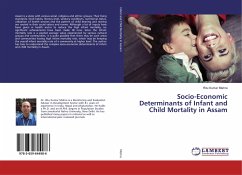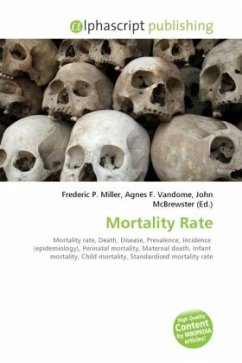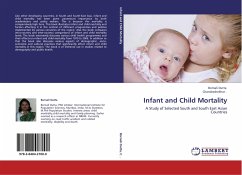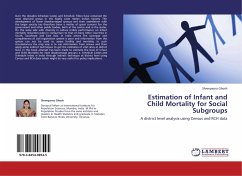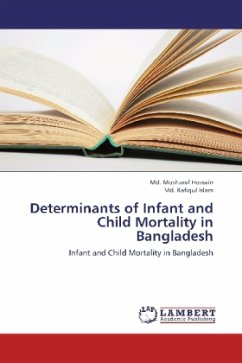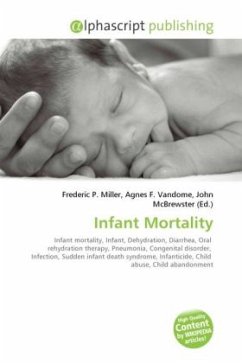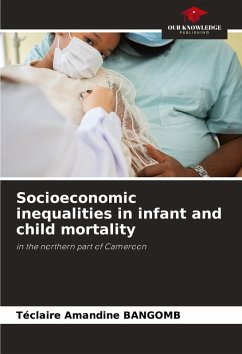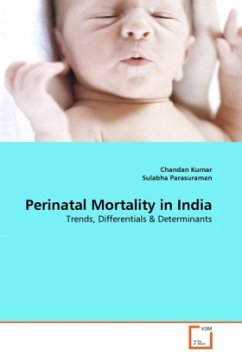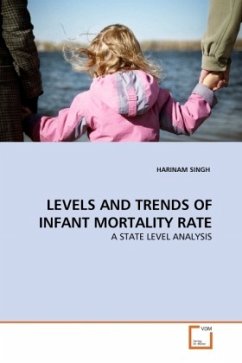
LEVELS AND TRENDS OF INFANT MORTALITY RATE
A STATE LEVEL ANALYSIS
Versandkostenfrei!
Versandfertig in 6-10 Tagen
32,99 €
inkl. MwSt.

PAYBACK Punkte
16 °P sammeln!
Infant mortality rate is a valuable indicator and it reflects a country's level of socioeconomic development and quality of life and is used for monitoring and evaluating population and health programmes and policies. It also affects the desired size of family. This study aims to find out the differentials and possible determinants of the infant mortality in Uttar Pradesh, India. By using the Sample Registration System data of the Government of India for the period of 1981 to 2008, time series analysis technique has been used to examine the levels and trends of infant mortality rate in Uttar P...
Infant mortality rate is a valuable indicator and it reflects a country's level of socioeconomic development and quality of life and is used for monitoring and evaluating population and health programmes and policies. It also affects the desired size of family. This study aims to find out the differentials and possible determinants of the infant mortality in Uttar Pradesh, India. By using the Sample Registration System data of the Government of India for the period of 1981 to 2008, time series analysis technique has been used to examine the levels and trends of infant mortality rate in Uttar Pradesh, India. Correlation and multiple regression analysis techniques have been used to examine the most important factors affecting infant mortality rate in Uttar Pradesh over the period of 1991-2001. This analysis reveals that the prevailing rate of high IMR in the Uttar Pradesh is around 80 during the last decade point towards the inadequacy in the quality of health and MCH services and on the other hand lack of demand for such services specifically during neonatal stage of the infant in rural areas.



